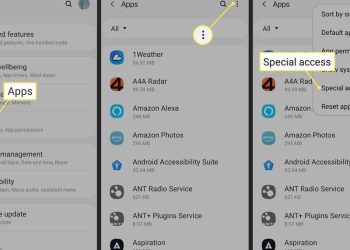Persuasive writing is one of the most challenging types of writing to write. If you’re looking for professional help with your essay, check out our online essay editor. It’s easy to use and it lets you tweak your work until it gets just how you want it. Whether you’re struggling with how to structure an argument or how to lead a reader through a persuasive chain, we can help! We’ve got some killer tips for getting started on your next argumentative Essay writing services.
What does it mean to be persuasive?
To be persuasive, your writing has to have a clear goal and make that goal believable. It also has to be direct and focus on the specific audience. It’s like making your readers believe something without them realizing it until it’s too late.
It takes practice and creativity to write persuasive essays. Here are some tips for getting started:
- Choose what you want to persuade someone about
- Identify why that particular audience needs convincing
- Use statistics, anecdotal evidence, and personal examples
- Draw connections between the two elements you’ve chosen
- Make your point clear at the end of your essay
- Sometimes it helps to use humor or shock value (but don’t overdo it)
How to write a basic argumentative essay
You can write a basic argumentative essay by following these steps:
– Start with an introduction that states your thesis and introduces the position you’re arguing for
– Create an introduction to your body paragraphs that explain how each point supports your thesis
– Introduce new information or ideas in each of your body paragraphs
– End each body paragraph with a conclusion that summarizes what you’ve said, restates your thesis, and makes any final thoughts
The basics of structure for your argument
The most important part of your essay is the introduction. It’s the hook that will grab a reader’s attention and set the tone for the rest of your essay. The best introductions are clear, concise, Assignment Help and entertaining in their own right. You’ll want to give the reader a sense of what they’re going to get from reading your article, so they should be able to guess what type of argument you’re going to make without having to read it all.
For example: “Many people have tried to change social media by regulating it, but none have succeeded.” You could also say: “Social media has been regulated before, but none have succeeded in doing so.”
How to avoid common mistakes in your essay
When it comes to writing an argumentative essay, it’s important to avoid any common mistakes that could harm your credibility before you even start. Here are seven potential pitfalls you should avoid when writing a persuasive essay:
– Using too many words: the key is using the right amount of words for your argument. If there are too many words in your essay, it will take longer for the reader to understand your point and that could lead to them losing interest
– Not constructing an effective opening paragraph: if you’re unsure about how to start off an argumentative essay, try using a personal anecdote or introduce a rhetorical question that can grab interest and pull the reader in
– Focusing too much on details: sometimes details can distract the reader from a broader point. Keep your focus on the bigger idea of your essay
– Leaving out necessary evidence: if you’re not familiar with research methods or statistics, then be sure to include sources.
This will help build credibility and show that you are knowledgeable about what is occurring in society as well as making sure all sides of an argument have been considered
– Not outlining key points in advance: this is one of our favorite tips! It helps keep you organized and focused on what needs to happen during the course of writing. Be sure to write down key points and make a plan before starting to write
– Providing no conclusion at all: if you’re struggling with how to end your paper, there’s no need to worry! The conclusion is usually
How to use rhetorical strategies.
Every argumentative essay has a form. It’s called the rhetorical triangle. The three basic parts of an argumentative essay are the introduction, the body, and the conclusion. Let’s take a deeper look at how to use rhetorical strategies in your essays.
The introduction: Here you want to grab your reader’s interest and give them a reason to read more. You might start by telling them about how important it is that they read this essay or why they should believe what you’re going to say (e.g., “No one can deny that climate change is an issue that needs more attention”).
The body: This is where you establish your thesis statement, describe your evidence, and make your point-of-view clear for your reader. If you’re struggling with finding the right way to start your body, try including a story or example from the beginning of the essay to help set up the rest of it. For example, “As someone who grew up watching movies like ‘Pocahontas’, I am always fascinated by stories about Indian culture.”
The conclusion: This is where you summarize what you’ve said so far and make sure that everything falls into place for your reader so that they can fully understand everything that you’ve said throughout the whole essay. Make sure there is a connection between everything in your argument and lighten up on any heavy language before ending it!
Visit Here: makeitpossibleproject.com

















